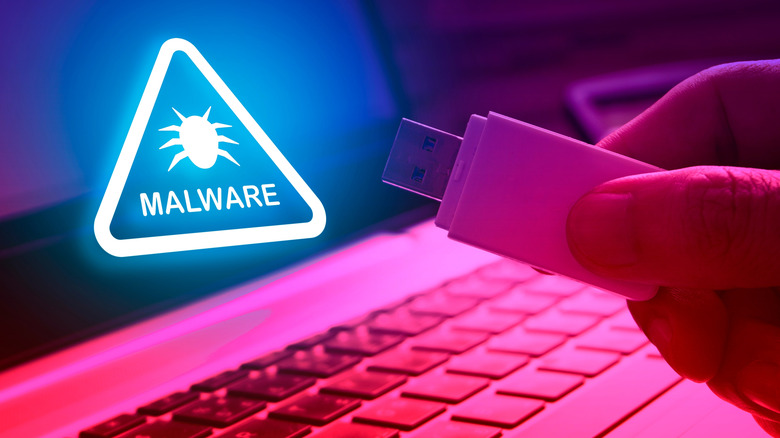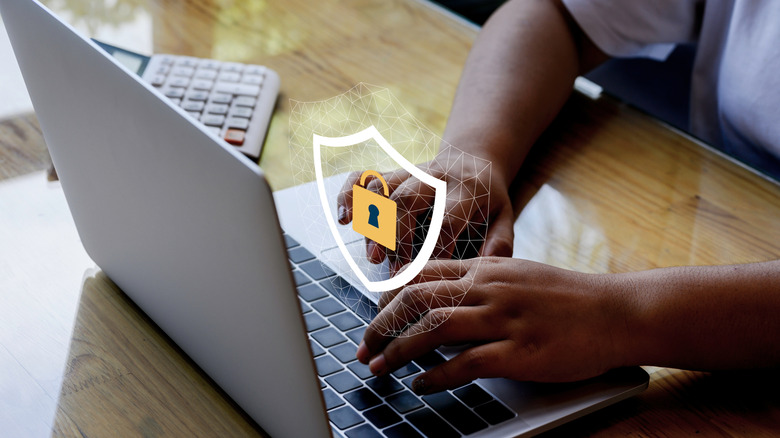Can Your PC Get A Virus From Plugging Something Into The USB Port?
The USB port on your PC makes it easy to connect everything from keyboards and mice to storage devices and useful accessories. Most of these devices work right away without any setup, which is convenient. But that ease of use also comes with a downside, since a rogue USB device could end up compromising your system.
USB drives, often called flash drives, are one of the most common ways malware spreads. Since they're so widely used for storing and sharing files, they usually don't raise suspicion. But flash drives aren't the only USB devices that pose a risk. According to the U.S. Cybersecurity and Infrastructure Security Agency (CISA), attackers have also infected popular USB devices such as digital picture frames during the manufacturing process. When plugged into your computer, these devices can act just like malicious flash drives.
USB attacks can compromise your PC in several ways. Some USB devices are designed to automatically install malware or steal sensitive data as soon as they're connected. In other cases, they might deploy ransomware that locks you out of your system until you pay for a decryption key. Another tactic involves using a USB device that mimics a keyboard. This lets it take control of your computer, run malicious commands, or spread malware across the network. Then there are USB Kill sticks. They can send high-voltage electrical surges through your PC and damage its internal components.
How to stay safe from USB attacks
Over the years, there have been several reports of USB-based attacks targeting everything from power plants and airports to private businesses. But the risk isn't just limited to large organizations. Individuals need to stay cautious too, especially as ransomware continues to rise. Of course, these USB attacks can only happen if you or someone else willingly inserts a malicious USB device into your computer. So, as long as you don't connect any USB drives you get in the mail, find on the street, or receive it as a freebie at an event, your computer should be safe.
That said, it's still smart to follow best practices to protect yourself from USB-based attacks. This means using trusted antivirus software and keeping your computer updated with the latest security patches. You should also turn off the autorun feature in Windows. To do that, go to Control Panel > AutoPlay, uncheck "Use AutoPlay for all media and devices," then hit Save.
If you absolutely need to see what's on an unfamiliar USB drive, the safest method is to use an air-gapped computer. Many kinds of USB-based malware rely on an internet connection, so using a system that isn't online lowers the risk. You could also open the drive in a virtual machine with software like VirtualBox. This will let you check the contents in a controlled environment. Of course, none of these precautions are foolproof, so your safest option is to avoid connecting unknown USB devices altogether.

